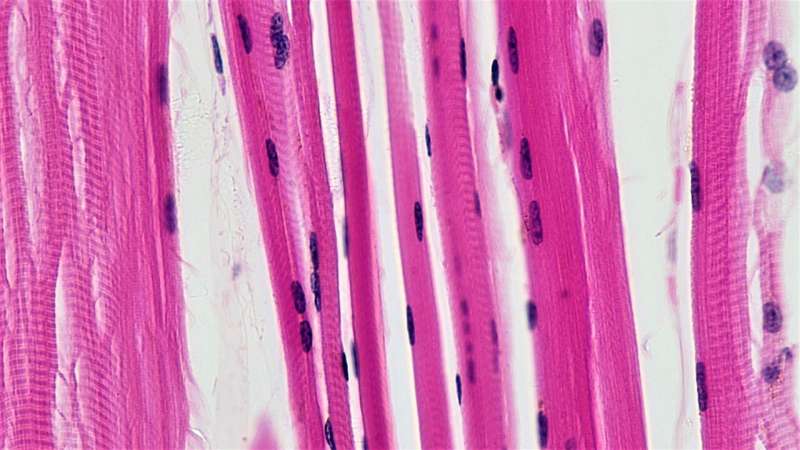Skeletal muscle fibers. Credit: Berkshire Community College Bioscience Image Library / Public domain
New research published in Developmental Medicine & Child Neurology indicates that early identification and treatment of patients with spinal muscular atrophy (SMA)—a genetic disorder characterized by weakness and wasting in muscles—can reduce the total financial costs associated with the condition.
In the analysis of data pertaining to 149 patients, (93 untreated, 42 treated after symptoms arose, and 14 treated after early diagnosis), the total societal cost was lower in untreated patients (due to high drug costs in treated patients), but costs were lower for treated patients who were identified by newborn screening than for treated patients identified due to the development of symptoms.
"These data are important as they are issued from a real-life prospective collection. They demonstrate clearly that as long as the decision to reimburse treatments for SMA has been made, newborn screening becomes a no-brainer—not only because it gives patients a much better future, but also because it saves a significant amount of money for the taxpayer," said senior author Laurent Servais, Ph.D., of the University of Liege, in Belgium and the University of Oxford, in the UK. "Using these data issued from the real world, we are working currently on a model that estimates the lifetime cost of the different strategies."
More information: Financial cost and quality of life of patients with spinal muscular atrophy identified by symptoms or by newborn screening, Developmental Medicine & Child Neurology (2022). DOI: 10.1111/dmcn.15286
Provided by Wiley
























